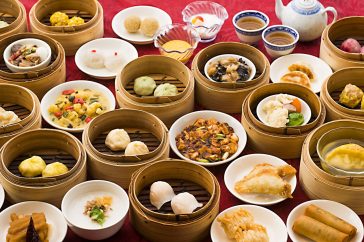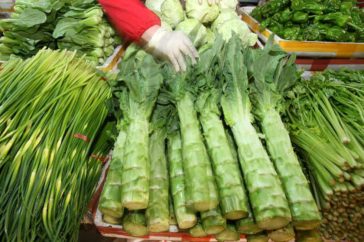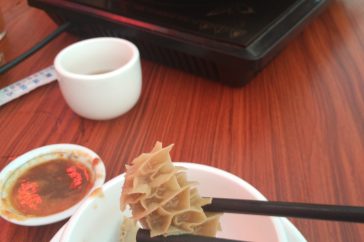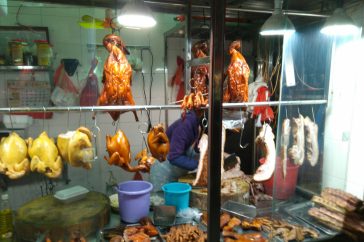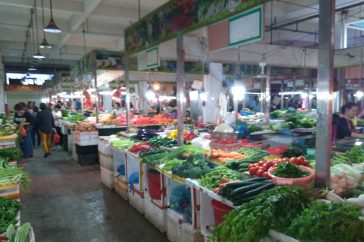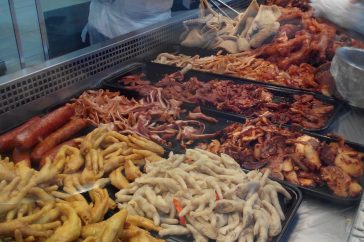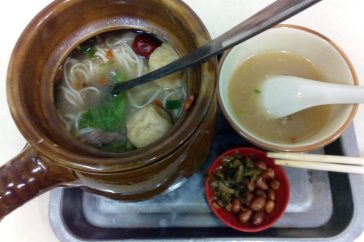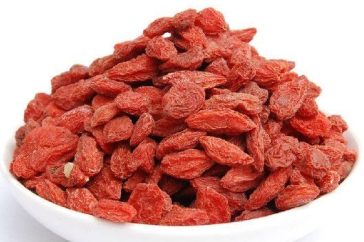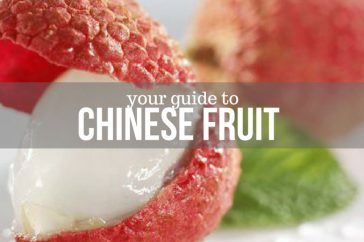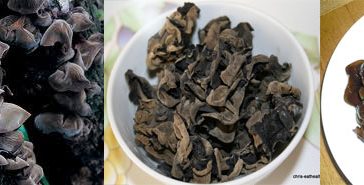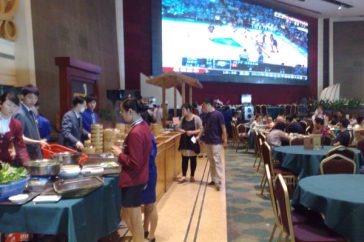In this intro to the broad range of authentic Chinese foods, we’ll cover the top food categories with the popular dishes to try for each one, plus, their Chinese names so you can order with ease. Chinese cuisine is one of the world’s top cuisines featuring a diverse range of…
-
-
The Complete Guide to Authentic Chinese Dumplings
Everything you wanted to know about Chinese dumplings including the different types, how to make authentic Chinese dumplings, filling recipes, dipping sauces, and more. The humble Chinese dumpling, or jiaozi (餃子) has a history of more than 1,800 years being a traditional specialty food and a staple food and local…
-
An Introduction to the 8 Famous Chinese Cuisines
This guide will provide an easy to digest intro to China’s famous cuisines with dish suggestions. I truly believe that the more knowledge you have about the local cuisine, the more rewarding your food experiences in China will surely be. It’s fair to say that one of the key experiences…
-
Guide to Authentic Dim Sum Dishes for Yum Cha & Zao Cha
In this guide, I am going to introduce a legendary part of Cantonese cuisine and culture that is dim sum, yum cha, and zao cha. Including all the top dim sum dishes you need to be trying, plus their Chinese names and pics for easy ordering at any dim sum…
-
Authentic Chinese Food: The Top 20 Foreigner Friendly Dishes
Here is a list of super delicious dishes in China that can be found in most cities and that visitors to China will love at first bite. For the new visitor, Chinese cuisine can seem a little intimidating and even altogether scary when not well understood, it can take a…
-
China’s Top Ten Snack Streets
Here is a list of the top ten snack streets and its no coincidence that they are also near to major scenic areas. Also fascinating is that many of them have been famed destinations of the Chī huò (foodie) for centuries. They really are quite special destinations especially for food…
-
Know your Chinese Tea – The Types, Growing Regions, Brewing, Culture & more
Let’s take a deep dive into the world of Chinese tea and explore types of tea with popular varieties, growing regions, selection, brewing, and wrap up with a little bit of culture. Tea Types and Varieties There are four classes of tea being Green, Black, White, Yellow, Oolong, and Fermented…
-
An intro to Traditional Chinese Breads inc. Bing and Mantou
Many people consider bread as a new product into the Chinese food culture but, actually, it has a history almost as long as the nation itself. Grinding grains into flour dates back to the Han Dynasty (206 BC – 220 AD) when mills were introduced from foreign countries via the…
-
A Visual Guide to Common Chinese Vegetables
Here's a one-page visual guide to some of the most common Chinese vegetables. Best thing is they are delicious and highly nutritious. With big pics, English - Pinyin & Chinese, you can easily track down your favorites in the market and try some new things.
-
Lets Eat…. Chang Fen (Rice Noodle Rolls)
This simple dish is a real favorite of mine and a staple of the Cantonese breakfast scene. Take an early morning wander along the streets anywhere from Hong Kong to way out past Guangzhou and you wont be able to miss it. Rice noodle rolls, or zhū cháng fěn (cantonese: chee…
-
Let’s Eat… Offal Hot Pot
Here is something YOU SHOULD try, when your Chinese friends take you to a beef hot pot restaurant, get ready for all kinds of offal and intestine, they love the stuff. And to be honest, it’s well worth trying and with the different sauces and condiments, it’s delicious, but some…
-
4 TCM food remedies for Weight Loss
Carrying a few extra pounds, I’m bypassing the local dim-sum restaurant and went on the hunt for local solutions for weight loss and here’s what I come up with. Firstly, everyone agrees, you can’t put in more than you give out, meaning, you need to burn more calories than you…
-
A Cantonese Roast Meat Stall
Roast meat, Siu Mei, is a popular item in Cantonese cuisine. Stalls like this are common place in market areas, featuring roast duck, char siu pork and other styles. This shop also features Qingyuan style chicken (the yellow chickens)
-
Daily Life in Guangdong: The Fresh Food Market
a farmers market in Guangdong. Locals love fresh produce and will shop daily.
-
Lets Eat… Chickens Feet
There’s not much that goes to waste around these parts, and that includes Chickens feet, not just spared out of thrift though, they’re a wildly popular snack and delicacy. You can find them at street food stalls, convenience stores, supermarkets and for a real treat, my favorite is Cantonese style…
-
Inside a Walmart in China – Here’s five things you probably won’t see in a US Walmart
Supermarkets in China can be an eye-opening experience, I remember going to buy some chicken when I first moved here and, lo and behold, there was live chickens, pulled from the cage, beheaded and plucked before your eyes, it. Talk about fresh. Walmart is fairly tame, in comparison to the…
-
Lets Eat… Clay Pot Noodles
Claypot Noodles (罐罐面) are a popular meal in my local area, but there certainly not to be found everywhere, as I’d never really noticed them before. Just recently tried them out at a local sidewalk restaurant the other day, it’s a very popular place at lunch times and at night…
-
Lets Eat… Sichuan Dry Hot Pot
Sichuan (or Szechwan/Szechuan) Cuisine is wildly popular, but UNLESS, you have a real penchant for spicy food it might not be the first place to start your culinary adventures. I mean real spicy. Once you have been here a while you’ll probably grow more and more accustomed to spicy food…
-
The benefits of Goji Berry (Wolfberry)
[translated from people.cn] Goji Berry(枸杞), also known as Wolfberry, according to traditional Chinese medicine, has tonifying the liver and kidney and nourishing blood for improving eyesight, anti-aging rejuvenation and other effects. Modern medical research found that Goji also has liver and functional in preventing fatty liver. Goji contains an active…
-
French Toast and Hong Kong Milk Tea
A popular snack you’ll find at Hong Kong tea restaurants is the local version of french toast.. the middle is filled with peanut butter, coated in egg batter then fried. Goes well with milk tea, which is another local speciality featuring a strong brew of black tea with condensed milk..…
-
Hong Kong Cuisine – local snacks and specialities
A guide to some of the snacks and meals that are popular with the locals, and where to get them [NOTE: this has translated from wechat and its a little imperfect, but I put here as a guide for food lovers looking for a genuine ‘local’ Hong Kong food experience.]…
-
Chinas Top Food Cities
Number 1: Chengdu I will never forget Chengdu, my first food experience there was the famous spicy hotpot, my mouth and lips were on fire from the red soup of chiller and peppers! In 2010, Chengdu was designated the “Capital of the World’s Gourmet Food” by UNESCO, and renowned for…
-
Let’s Eat…… Snacks
Here’s a quick guide to some of the popular local snacks foods you’ll see on your travels around China (excuse the translations, will get to correcting the dish names): Lijiang: delicacies include spiral dumpling, buckwheat cake, walnut meatball, champion cake, Naxi Bowl Tsai cake, millet meatloaf, spiral cake, pineapple rice…
-
lets eat.. Cicada
At first I was a little reluctant, I am sure you understand, but as I watched everyone else sticking there toothpicks into the platter of crunchy bugs, I thought, well, when in Rome. And I glad I did, they are delicious in their own way. Apparently they are also high in protein,…
-
A Visual Guide to Chinese Fruits
Here’s a rough guide to fruits you are likely to come across in your travels around China including there seasons. The Chinese name for fruit is Shuǐguǒ ( 水果). Chinese Pear (Táng lí-唐梨) Season: Autumn Passion fruit (Bǎixiāng guǒ-百香果/熱情果) Season: midsummer Common Fig (Wúhuāguǒ-無花果) Season: July and September Persimmon (Shì-柿) Season: September…
-
Let’s Eat…… Fungus
China has nearly 900 species of wild mushroom, more than 50 of which are in commercial cultivation. Mushrooms are used widely in both cooking and in traditional medicine. They are sold fresh and dried. Black Fungus or Cloud Ear Fungus (黑木耳 hui mu er) Looks like an ear, it’s thin and a…
-
Hotel Breakfasts in China – What to Expect
One of the best things after a late night arrival into an unknown city is to wake up and find an awesome breakfast awaiting. So, when travelling what can you expect in a Chinese hotel, and how is the breakfast, well, here’s a guide. Most hotels I have stayed in…
-
What can you get for $4 at a Bakery in Shenzhen, China?
Lots of tasty things, thats what! Theres a little bakery at the bottom of the Maple Leaf Nanshan hotel which I often visit to grab some lunch, the staff are friendly and the food is tasty. Even better is how amazingly cheap it is! All this cost about 28RMB (or…
-
Dim Sum Breakfast at Kempinski Hotel Shenzhen
Kempinski is a European luxury hotel chain and they have a hotel in Nanshan District of Shenzhen, and it’s one of the citys leading 5 star hotels. I haven’t had the pleasure of staying except to say that its in a great spot close to the new Coastal City Shopping…
-
The Famous Sichuan Hot Pot
After a relaxing massage at Jiafu Fudao, Rebecca took me a great place to enjoy one of Sichuan’s famous dishes, the Hot Pot. While Hot Pots are available in most places across China, apparently the Chengdu Sichuan version is something unique! Extremely unique for me as I’d never had one…



